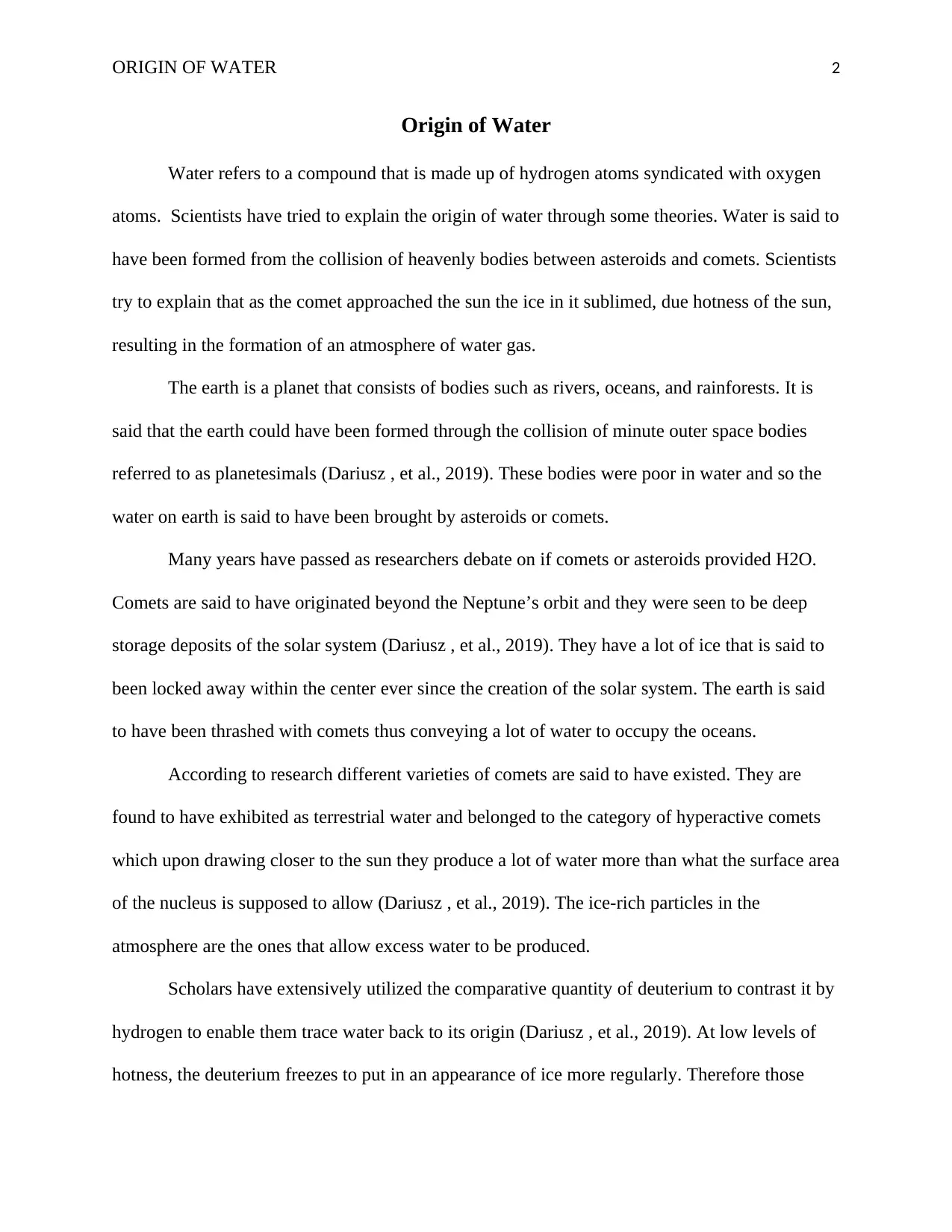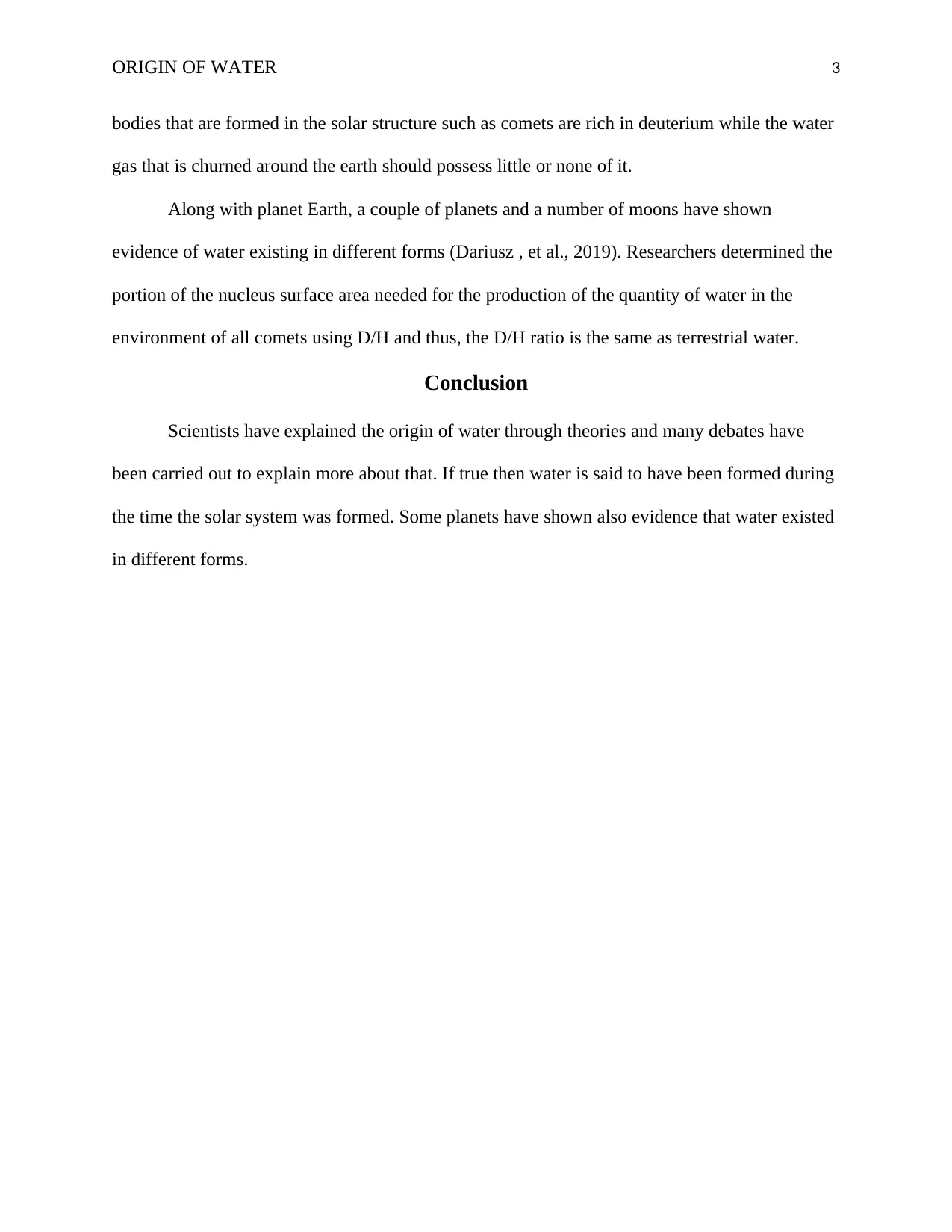Assignment 1 SCIE 1060: Report on the Origin of Water in Biology
VerifiedAdded on 2023/03/31
|4
|557
|143
Report
AI Summary
This report delves into the scientific understanding of water's origin, examining the collision of celestial bodies like asteroids and comets as primary sources. It explores the sublimation of ice in comets, the formation of water gas, and the role of planetesimals in the early Earth's composition. The report discusses the debate between comets and asteroids as water providers, the characteristics of different comet types, and the use of deuterium-to-hydrogen ratios to trace water's origin. It highlights the presence of water on various planets and moons, as well as the research correlating the D/H ratio to terrestrial water. The conclusion summarizes the theories and ongoing research in this area of biology.
1 out of 4











![[object Object]](/_next/static/media/star-bottom.7253800d.svg)